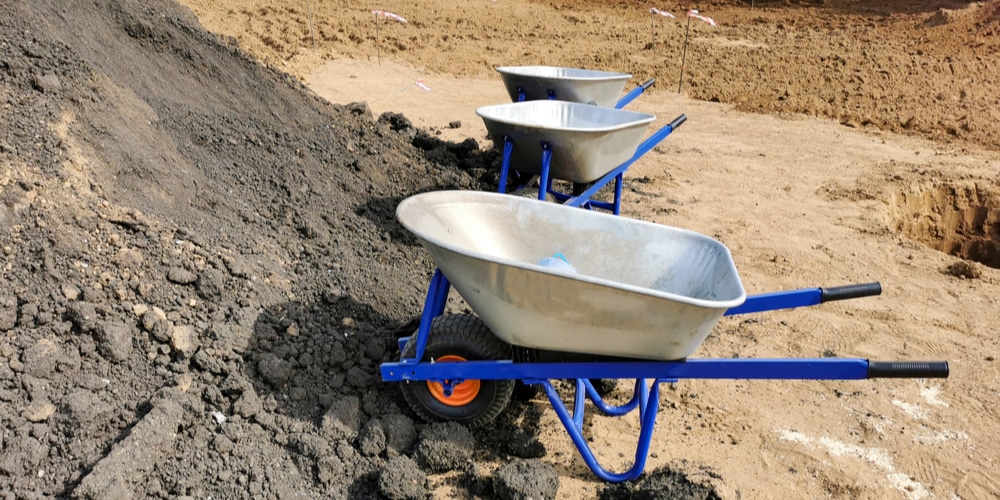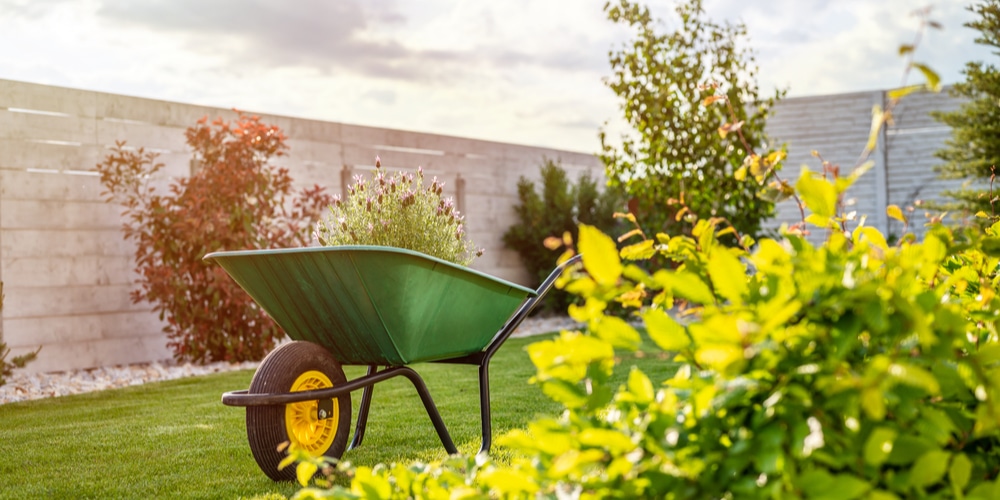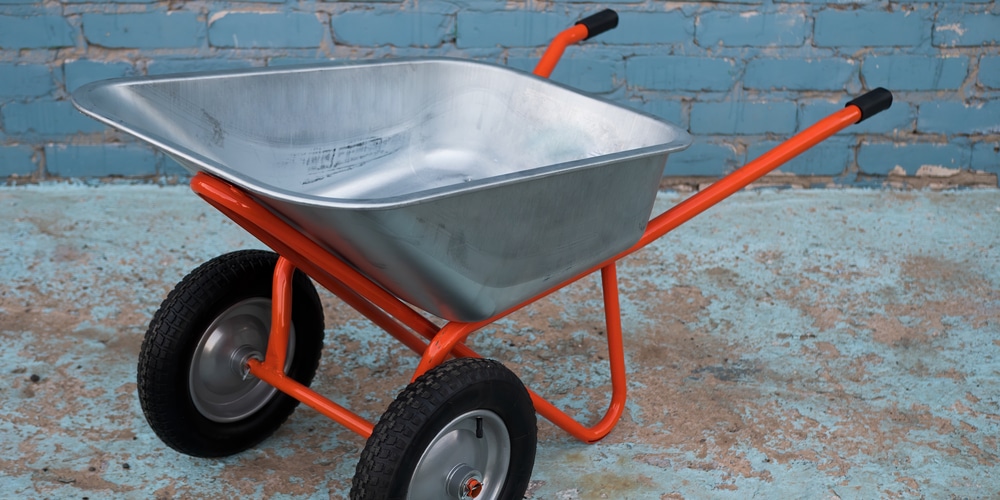Wheelbarrows usually come in several sizes and materials, with plastic and steel being the most common. It’s a very useful gardening tool to have and can save you a good deal of time and effort for virtually every yard or planting task you might come across.
In your search for the right wheelbarrow, you’ll eventually end up choosing either a plastic (or poly) or steel-type product. Here’s a rundown on the wheelbarrow poly vs steel debate.
Wheelbarrow Poly vs Steel?

Steel and plastic wheelbarrows each have their own set of pros and cons, which are the following:
Poly Wheelbarrow Advantages
- Easy to move around
- Lighter overall
- Does not rust
- Higher repairability
Poly Wheelbarrow Disadvantages
- Tends to fold or warp in excessive weight
- Becomes brittle over time
Steel Wheelbarrow Advantages
- Ideal for heavy items and loads
- Can handle significant wear and tear
- May stick around for longer
- Does not fold or bend
Steel Wheelbarrow Disadvantages
- Not as mobile or easy to handle
- Tends to accumulate rust
Why Choose Poly Wheelbarrow?
Poly wheelbarrows are commonly referred to as ‘plastic wheelbarrows’ and are typically made from polyethylene or polypropylene material. Budget- and design-wise, you will have more options when buying a poly wheelbarrow as they tend to come in many different colors, sizes, and shapes.
This kind of wheelbarrow is great for light yard and gardening work. They’re also easier to maneuver, which means you won’t have to exert too much effort to bring items and materials back and forth on your work site.
With a poly wheelbarrow, you won’t have to worry about it getting rained on. You can leave it out in a shaded area and it will do just fine. However, you shouldn’t put it in an area that gets direct sunlight, or the plastic will warp and the wheelbarrow will become more brittle and prone to breakage.
Since plastic wheelbarrows are lighter they’re better for individuals who do casual garden or yard work. You can load up to the recommended weight as per the equipment specifications and maneuver the tool more easily compared to the steel kind. Also, the poly wheelbarrow can get around obstacles and bumps on the ground better than the steel wheelbarrow variety.
Plastic Wheelbarrow Drawbacks
Being rust-proof doesn’t mean you can just leave your plastic wheelbarrow out in the yard. When exposed to high temperatures and strong sunlight, the poly material will start to get brittle, which equals holes and breakage.
Significant damage can render it unusable, and sometimes all it takes is a sharp and heavy material, like stone, glass, or metal to make it crack or break.
Why Choose Steel Wheelbarrow?
Steel wheelbarrows are somewhat the opposite of their poly counterpart in that it’s made for heavy duty work. You can load up quite an amount on the wheelbarrow, even sharp ones such as glass or metal poles, as well as rocks and building supplies.
The only problem is that you’ll have to account for the weight of the wheelbarrow’s body or else you won’t be able to push it.
When it comes to dependability steel-type wheelbarrows are the recommended choice. They won’t bend even when you overload and can take paint cans, bricks, cement, and gravel without worry.
In a curious turn, steel wheelbarrows are somewhat the opposite of plastic in that they can be exposed to direct sunlight and heat, but won’t be as durable in the face of moisture and rain.
If most of your yard or garden work involves sharp and heavy stuff, then the steel wheelbarrow is the right equipment to buy. You’ll find it more dependable and will be more useful in the long run compared to its plastic counterpart.
Steel Wheelbarrow Drawbacks
Much like poly wheelbarrows, steel products aren’t meant for long exposure outdoors. If you have a garage or shed, then it’s best that you store your wheelbarrow there after doing some yard work.
Maneuverability is a bit more difficult compared to a plastic wheelbarrow, although it’s more stable and won’t tip over as easily. They’re typically more expensive, but they do have the capability to take more than the usual wear and tear. Rust might be its greatest enemy, but it’s something that can be avoided.

